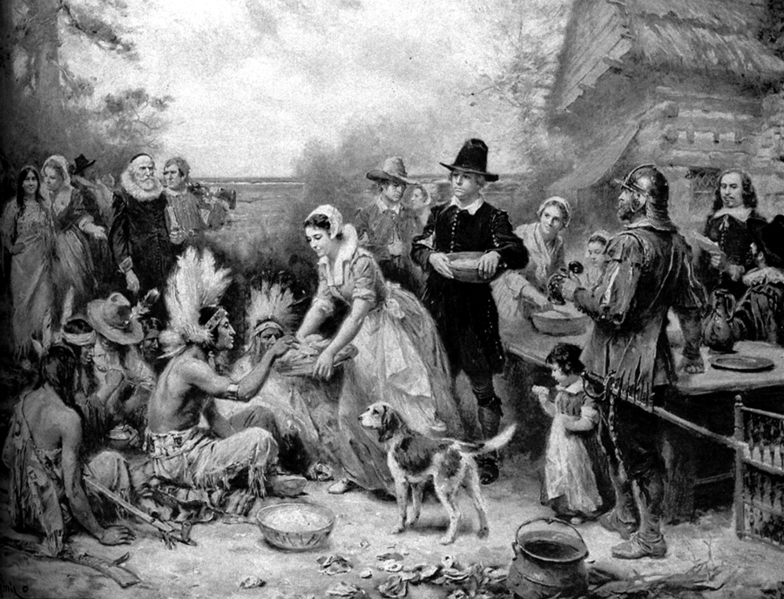A Tale of Two Pies: Consuming the Metaphor
Posted in The Gnovis Blog
“Food is a rich source of metaphor, whether in women’s fiction or in the general culture; whether offered out of generosity or sacrificial self-denial, whether served with grace or slovenliness, artfully or with poisonous malice; whether it serves as a vehicle of celebration or cerebration, satiety or seduction. Eating is an act charged with potency…. (1998: 317).” – Eileen T. Bender, “The Woman Who Came to Dinner: Dining and Divining a Feminist “Aesthetic.”
It’s that time of year again, the season where we gather around our friends and families to indulge in our favorite dishes: our tables transformed into cornucopias, overflowing with food and drink. More so than any other holiday in which we similarly gather, Thanksgiving is especially poignant for the reason that its sole purpose is dedicated to the ritual of the feast. It’s a time where we as Americans reify our ability to have all of these foods in front of us– a demonstration of the wealth and richness and success of our families and our nation. And yet, despite larger issues at work, for many, a yearly debate remains: What type of pie do you serve during Thanksgiving for dessert? Pumpkin or Apple?

Pumpkin of course is the traditional Thanksgiving pie, where as apple is the “traditional” American pie (one which also happens to be in season during the fall and winter months). Because, after all, what’s more “American” than apple pie?
Both pies can be traced back to the New World, where settlers adopted European pie making traditions to local ingredients, namely the squash and the varietal of apples growing in the New World. While many families today choose to solve this dueling pie conundrum by providing multiple pie options, venturing into the realm of sweet potato or pecan depending on regional preference, or even creating the pumpkin apple pie, the two parallel narratives remain. So, as Thanksgiving is very much a celebration devoted to the American historical narrative, how does one choose the correct pie to serve?

Many texts have drawn parallels between the act of eating and communion, a classic example being the ceremony of wine and wafer. And it’s not hard to see the parallels; eating is a way that we connect physically with metaphor, where physical embodiment of metaphor allows us to fully and wholly have a bodily, and moreover corporeal experience, with the things that we hold as true. As such, eating is far from a politically neutral act. Simply look at the controversy that exists with the current obesity crisis, which has gotten particularly heated in the arena of public schools as of late; Michelle Obama and Sarah Palin disagreeing on how big a role the government should play in prescribing what we are and are not “allowed” to eat.
This is largely due to the fact that today, American practices of eating has come to stand for America; but specifically it stands its values. Whether in the everyday banal act of eating, or in the more conscious act of feasting, the dishes and ways which we celebrate national holidays through food is simultaneously a method for reaffirming national identity and upholding morals we live by. Different from other American foods, Thanksgiving dinner makes particularly strong references to certain historical truths, perpetuating an idealized narrative surrounding the history of our founding fathers. The American relationship with food has very much come to embody the values of the American citizen; the original puritan origins of America which carry on today in the imagined community are very much reflected in Thanksgiving, where through food, we consume American values literally and figuratively.

So with any of the foods on your table this Thanksgiving, as to whether you are more of a traditionalist or a “traditionalist,” I’ll leave that up to you, and the grocery store.
